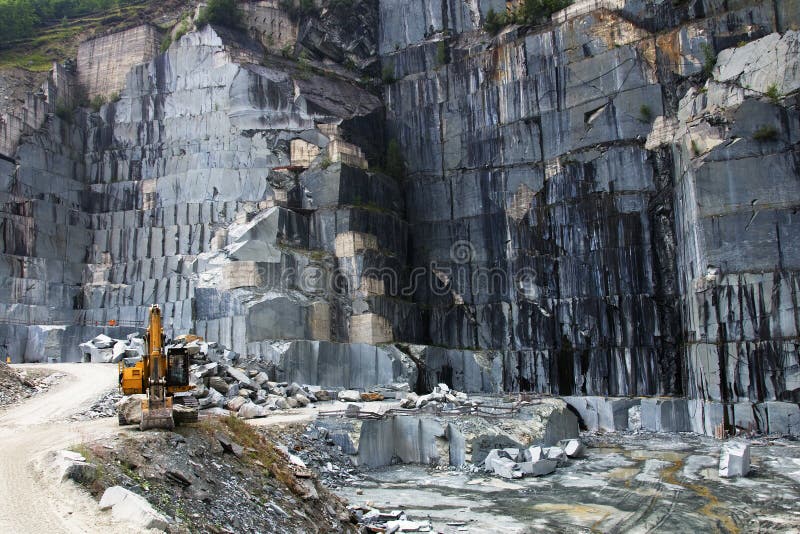Uncovering the Rich Background and Sustainable Practices of Granite Quarrying
As we depend on the precipice of revealing the intricate tapestry of granite quarrying, a trip with time reveals not just the physical act of removing stone however likewise the social and historical value woven right into the really material of this technique. From the ancient beginnings that laid the foundation for modern-day quarrying techniques to the sustainable techniques that are forming the future of this industry, each sculpt mark on granite surfaces narrates waiting to be uncovered (granite quarries in south africa). The tradition of granite quarrying extends far past mere removal; it is a testament to human resourcefulness, durability, and the enduring attraction of this impressive rock
Old Origins of Granite Quarrying
Dating back to old people, the technique of quarrying granite has actually been an important component of human history and architectural development. The earliest evidence of granite quarrying days back to ancient Egypt, where substantial pyramids and elaborate sculptures were crafted from this durable stone. The Egyptians utilized primitive devices to remove granite blocks from quarries, showcasing the significance of this material in their monumental constructions.
Relocating onward in background, the Greeks likewise made considerable payments to the quarrying of granite. The Greeks utilized granite in numerous building wonders, such as holy places and statues, demonstrating their skill in shaping and sculpting this durable rock. The Romans better refined the strategies of quarrying granite, utilizing sophisticated devices like chisels and hammers to remove and shape granite for their legendary frameworks.
With the centuries, the practice of quarrying granite has progressed, with modern innovations enhancing performance while maintaining the timeless allure of this natural stone - granite quarries in south africa. From old human beings to modern builders, the legacy of granite quarrying proceeds to form our globe
Evolution of Quarrying Strategies
The evolution of quarrying techniques has been noted by a continual progression towards higher performance and precision in removing granite. From the primary techniques used by our ancestors to the innovative innovations used in modern-day quarrying procedures, the industry has actually gone through significant advancements. Early quarrying techniques involved manual work with standard devices such as knives, hammers, and wedges to extract granite blocks from the planet. As people advanced, methods like fire-setting and primitive dynamites were introduced to promote the extraction process.
In more recent times, the advent of equipment transformed the quarrying industry, allowing quicker removal rates and enhanced performance. Technologies such as ruby cable saws, high-pressure water jets, and pneumatic drills have come to be typical in contemporary quarries, permitting exact cutting and reduced waste. Advancements in computer-controlled equipment and 3D modeling have maximized quarrying operations, leading to marginal environmental effect and boosted sustainability methods. As the demand for granite remains to rise, the development of quarrying methods stays important to conference market needs effectively and sustainably.
Social Importance of Granite
Granite holds a profound social relevance throughout numerous people due to its enduring visibility in architectural masterpieces and prized monoliths. The social value of granite extends beyond its physical characteristics; it personifies strength, stability, and timelessness, making it an icon of withstanding legacies and customs.

Sustainable Practices in Quarrying
In the middle of the rich background of granite quarrying and its cultural relevance lies a growing emphasis on lasting methods within the market. As ecological recognition and problems regarding resource deficiency have actually enhanced around the world, the quarrying sector has actually progressively accepted lasting methods to reduce its effect on the setting and bordering communities.

In addition, improvement and rehabilitation of quarry websites post-extraction are essential to lasting practices. By restoring quarried locations to an all-natural or useful state, such as creating wildlife environments or recreational areas, quarriers can balance out the ecological impact of their procedures and add positively to the neighborhood ecological community.
Legacy of Granite Quarrying
With a historic backdrop soaked in workmanship and industrial development, what enduring impact has granite quarrying left on the landscape of modern culture? The legacy of granite quarrying goes beyond plain removal methods; it has formed building marvels, metropolitan landscapes, and social heritage worldwide. The resilient nature of granite has made it a recommended choice for monoliths, buildings, and infrastructure, standing as a testament to the skill and artistry of quarry workers throughout generations.
In addition, the economic impact of granite quarrying can not be neglected. The sector continues to give work opportunities and drive regional economic situations in regions where granite removal prevails. It has actually also spurred technical advancements in quarrying techniques and equipment, leading to more reliable and sustainable methods.
In regards to sustainability, the legacy of granite quarrying Discover More Here includes efforts to mitigate environmental influences through improvement projects and liable resource monitoring. By stabilizing economic interests with ecological stewardship, the industry makes every effort to make certain that future generations can continue to gain from this enduring natural deposit.
Verdict

Comments on “A Journey Via Granite Quarries in South Africa: Unveiling Nature's Virtuosity”